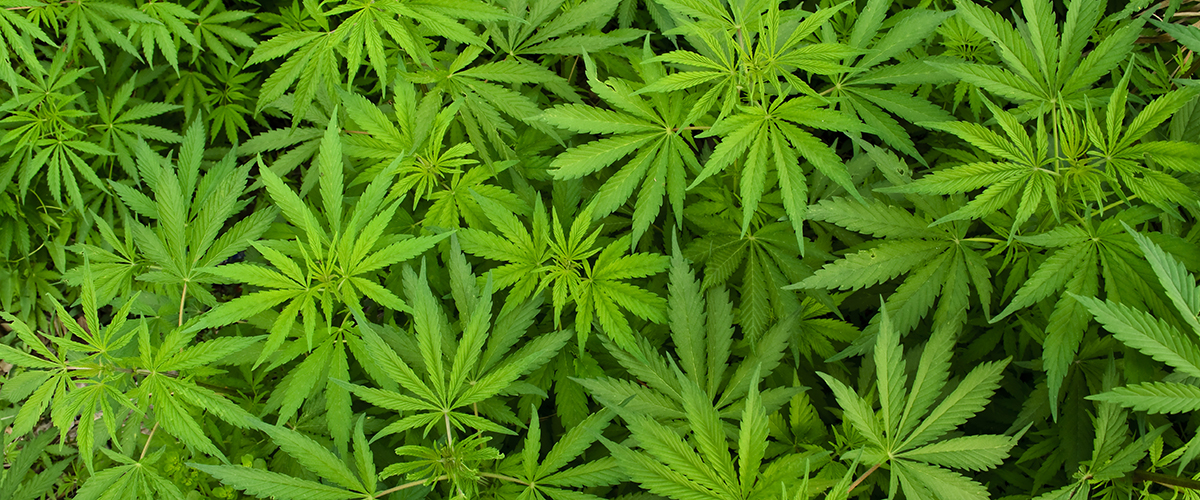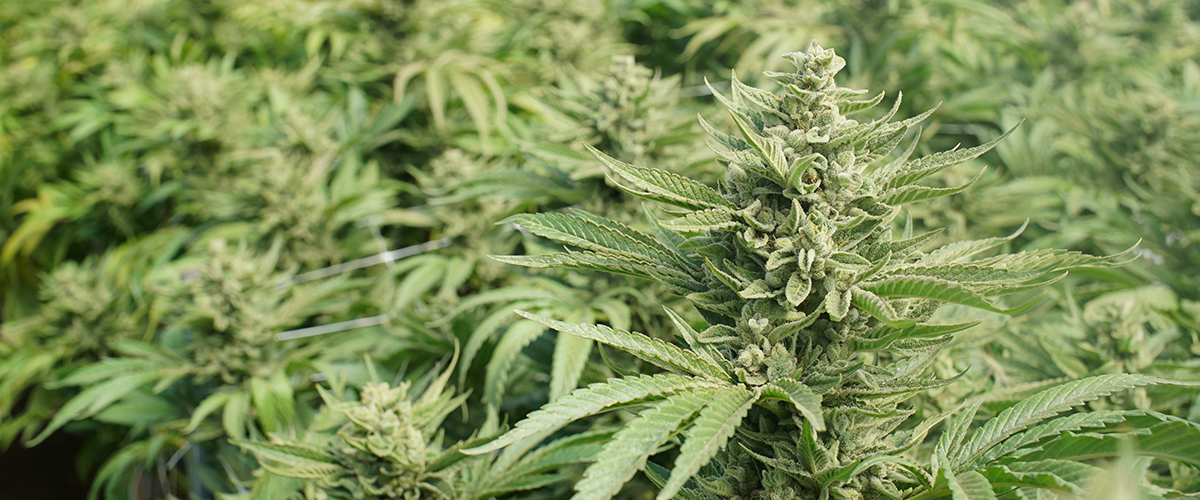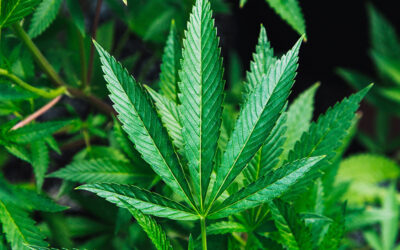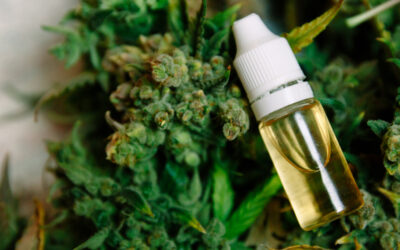Cannabis flavonoids play an important role in the odor and flavor differences between marijuana strain varieties.
Of the more than 200-plus active compounds in cannabis, often times the not-as-well-understood flavonoids get overlooked.
While they only make up around 10 percent of all the compounds in cannabis, flavonoids play an important role in the smell, taste, color, and effects of medical marijuana.
Researchers have yet to come close to fully understanding the potential of cannabis flavonoids and more studies are desperately needed. Still, several appear to have some health benefits, including antioxidant and anti-inflammatory properties. Additionally, some researchers believe that cannabis flavonoids work in conjunction with cannabinoids and terpenes to promote wellness.
Here we discuss cannabis flavonoids, including what they are, the role they play in the appearance and flavor of your favorite strains, and what studies have so far found about their benefits.
What are Cannabis Flavonoids?
Cannabis flavonoids are a naturally occurring group of phytonutrients that are responsible for the vivid non-green color pigments in marijuana and hemp plants. Flavonoids are also responsible for helping protect the health of cannabis plants by filtering out UV rays and preventing diseases, pests, and fungi.
Flavonoids are not unique to cannabis. In fact, over 6,000 individual flavonoids have been identified and many are found in the fruits, vegetables, and herbs that we routinely consume. Scientists have found that they play an important role in the smell, taste, and non-green colors of plants throughout nature.
The word flavonoid comes from the Latin term “flavus,” meaning yellow and referencing the compound’s role in providing plants with their respective color pigmentation. The bright blue color in blueberries and vivid red color in red roses, for example, are due to flavonoids.
There are some flavonoids that are exclusive to cannabis plants like marijuana and hemp. These cannabis-exclusive flavonoids are known as cannaflavins. The compounds are found readily in cured marijuana flower and leaves. Commonly grouped together, cannabis flavonoids are thought to supplement the other cannabis phytonutrients to play a highly bioactive role in the plant’s consumption and cultivation.
There are thought to be some 20 flavonoids thought to be in cannabis, some of which include:
- Cannaflavin-A (cannaflavin)
- Cannaflavin-B (cannaflavin)
- Cannaflavin-C (cannaflavin)
- Quercetin
- Isovitexin
- Apigenin
- Beta-Sitosterol
- Luteolin
- Orientin
- Kaempferol
- Catechins
- Vitexin
The distribution of cannaflavins varies depending on the strain of cannabis and growing conditions. They play an important role in providing the odor and flavor differences between marijuana strain varieties.
What Do Cannabis Flavonoids Do?
Besides contributing to the color, taste, smell, and overall sensory experience of cannabis, flavonoids are also pharmacologically active compounds that may have medicinal benefits.
Evidence suggests that flavonoids work synergistically with cannabinoids like cannabidiol (CBD) and tetrahydrocannabinol (THC), and terpenes like myrcene and limonene, to contribute to the range of effects produced by cannabis. A theory called the “entourage effect” maintains that all the compounds in cannabis – such as flavonoids, cannabinoids, and terpenes – work together to influence the body’s endocannabinoid system and magnify the natural beneficial effects of cannabis.
Cannabis flavonoids are non-psychoactive, which means they will not cause a euphoric high like the well-known cannabinoid THC. In fact, flavonoids are thought to subdue the psychoactive properties of THC.
Researchers have also started to investigate the potential therapeutic properties of individual cannabis flavonoids. Cannabis flavonoids are vastly understudied, but so far, the findings suggest that cannabis flavonoids may possess beneficial properties related to their anti-oxidative, anti-inflammatory, and even anticarcinogenic effects that promote health.
Cannaflavin-A and Cannaflavin-B
Recently, Cannaflavin-A and Cannaflavin-B were found to have powerful anti-inflammatory properties. In one study, Cannaflavin-A and Cannaflavin-B effectively inhibited PGE-2, a prostaglandin responsible for inflammation, in a similar manner as aspirin but exponentially more powerful than the common, over-the-counter medicine.
Catechins
Researchers have found that Catechins, which is also found in cocoa, teas, and other pome fruits, promotes cardiovascular health because of its antioxidative, anti-hypertensive, anti-inflammatory, and anti-proliferative effects, as well as helping to maintain healthy cholesterol levels.
Quercetin
Quercetin, also found in many fruits and vegetables, is known for being an antioxidant and for having anti-viral properties that effectively inhibit the Influenza A virus.
Beta-Sitosterol
Beta-sitosterol, a cannabis flavonoid also found in nuts and avocados, has demonstrated anti-inflammatory properties.
Vitexin and Isovitexin
In both in vitro and in vivo studies, Vitexin and Isovitexin have shown to have anti-cancer effects. One research review found evidence that the two cannabis flavonoids are “chemopreventive” and act against cancer by encouraging the degradation or death of cancerous cells.
Orientin
One of the most commonly extracted flavonoids from plants, Orientin has shown to have a wide array of beneficial properties. A comprehensive review investigating the medicinal properties of Orientin concluded that the flavonoid has antioxidant, anti-aging, anti-viral, anti-bacterial, anti-inflammatory, vasodilation and cardioprotective, radiation protective, neuroprotective, anti-depressant, anti-adipogenesis, and pain-relieving properties.
Apigenin
Among the best studied of the flavonoids found in cannabis, Apigenin has demonstrated anti-anxiety and anti-inflammatory properties. The estrogenic properties of Apigenin have shown to inhibit the growth of breast cancer cells in several studies.
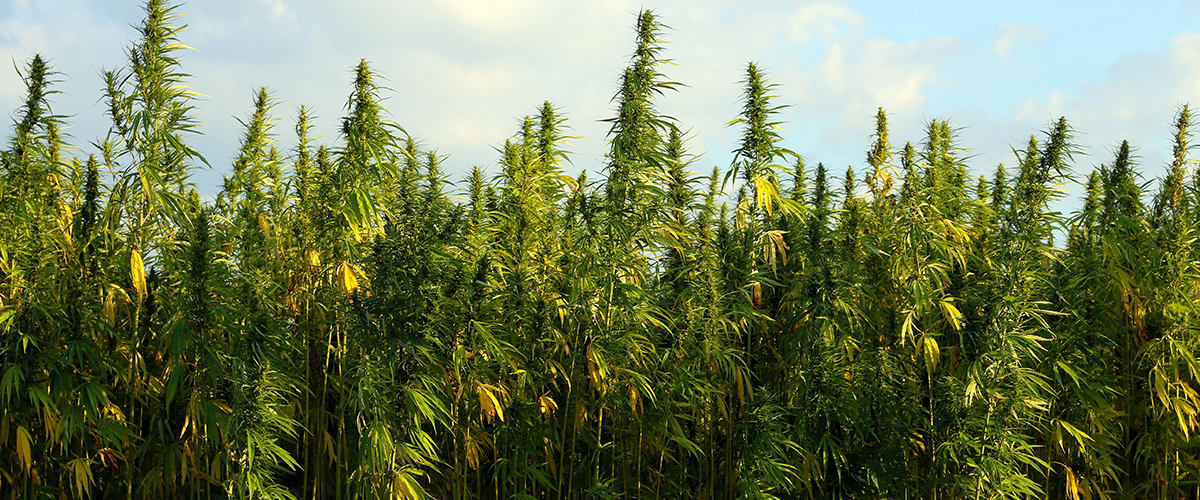
Are Cannabis Flavonoids Legal?
While cannabis flavonoids aren’t specifically listed as controlled substances under United States federal law, marijuana is. The 1970 Controlled Substances Act prohibits the use, possession, cultivation, and distribution of cannabis. This act makes cannaflavins, those flavonoids exclusively found in cannabis, illegal to obtain under federal law.
Despite cannabis being illegal under federal law, more than 30 U.S. states and Washington D.C. have legalized medical marijuana, and more than 10 of those states plus Washington D.C. have also legalized recreational marijuana.
Unfortunately, despite some states legalizing marijuana, federal prohibition has hindered the volume of research in regards to cannabis flavonoids. Researchers interested in investigating the therapeutic potential of cannaflavins face regulatory hurdles and additional costs that make conducting studies difficult. To more thoroughly understand the role that cannabis flavonoids can play in health, it is extremely important that federal restrictions on cannabis be lifted.
All You Need to Know About Marijuana
With medical marijuana becoming legal throughout the U.S., many are looking to discover more about its effects and how to legally obtain it. If you are interested in learning more about the basics of medical marijuana and its compounds, visit our Cannabis 101 page.

